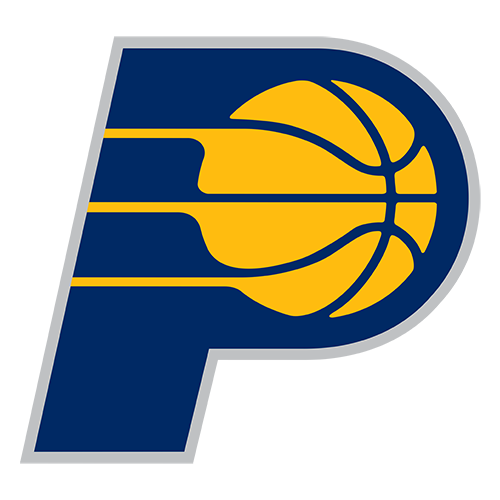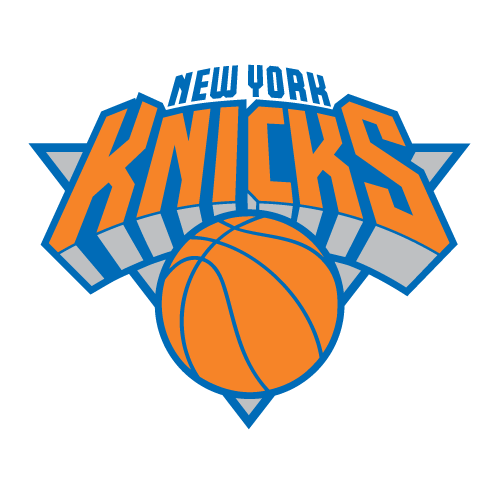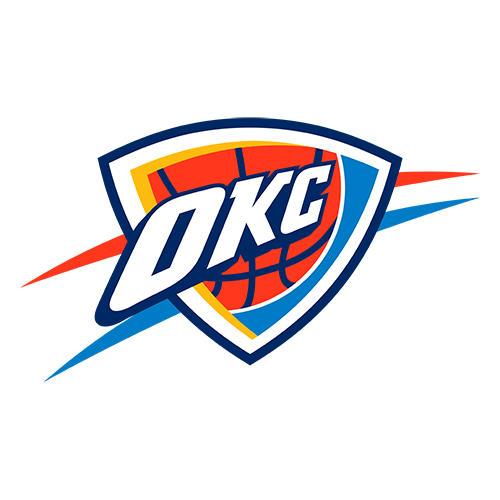NBA insiders
The 2025 NBA conference finals are both potentially a game away from ending, with four teams fighting for a spot in the Finals.
The No. 1 seed Oklahoma City Thunder took a commanding 2-0 lead in the Western Conference finals against the sixth-seeded Minnesota Timberwolves before getting blown out in Game 3 at Target Center. But the Thunder bounced back to win Game 4 in a back-and-forth battle. They head back to Oklahoma for Game 5 and look to close out the series with a 3-1 lead.
In the East, the No. 4 seed Indiana Pacers took a 2-0 lead against the 3-seed New York Knicks at Madison Square Garden. But the Knicks rallied on the Pacers’ home court in Game 3 after a fourth-quarter surge from Karl-Anthony Towns. The Pacers responded by taking Game 4 at home and will head back to New York with a 3-1 series lead
As these elite teams face off, our NBA insiders break down their biggest takeaways from every matchup and what to watch for in both showdowns.
Jump to a series:
Pacers-Knicks | Timberwolves-Thunder
More coverage:
Schedules and results | Offseason guides

Eastern Conference


Game 4: Pacers 130, Knicks 121
As Tyrese Haliburton sat at the postgame news conference inside Gainbridge Fieldhouse after Indiana’s second-half collapse in Game 3 of the Eastern Conference finals, he did not hesitate to predict how things would look when his Pacers took the court against the New York Knicks in Game 4.
“I think a lot of our offensive struggles in the second half were due to me,” Haliburton said.
“I got to be better there. And I will be better in Game 4.”
It’s one thing to make a declaration like that. It’s another to not just follow through on it, but to do so emphatically.
As Haliburton led the Pacers to a 130-121 victory to move to within one win of returning the franchise to the NBA Finals for the first time in a quarter century, here’s all he did:
It was a virtuoso performance, the kind of conducting job few other players can do. After the way Indiana’s play tailed off in the second half of Game 3, it was a fitting way to regain control of this series.
There has been plenty of talk throughout these playoffs about Indiana’s ability to pull off one frenetic comeback after another; to play at a high-octane pace in a way no team has really ever been able to in the playoffs, when the game traditionally slows down; and to systematically mow through one of the game’s transcendent players in Giannis Antetokounmpo, dominate the 64-win Cleveland Cavaliers and potentially dismiss the Knicks in five games.
All of it, though, is only possible because of the brilliance of Haliburton. Yes, Pascal Siakam — who has a 26-point and 10-rebound showing in a Finals closeout game on his résumé — is a fabulous player, scoring 31 points Tuesday, the latest proof he’s a perfect partner with Haliburton. Yes, Rick Carlisle is a championship-winning coach, who has molded this franchise around a player he sought out as far back as draft night in 2020, when the Dallas Mavericks tried to move up to acquire him. Yes, the Pacers have surrounded him with two-way role players like Andrew Nembhard, Aaron Nesmith and Myles Turner, creating the ecosystem in which he could thrive.
But it’s Haliburton at the controls. The Pacers have gone from a fun, frisky team to one that is in the Eastern Conference finals for a second year in a row and on the verge of returning to the Finals.
It’s also exactly the kind of way the people in this basketball-crazed state want to see their hoops played: team-first, pass-heavy and with the ball finding energy and the open man constantly.
In the same way that Indiana’s likely Finals opponent, Oklahoma City, relentlessly pressures its opponents defensively for all 48 minutes of a game, Indiana does the same offensively. A team might be able to slow the Pacers down for a quarter, a half or a game, but Indiana’s bet is that a team can’t handle that over the course of a seven-game series.
No one has come close to it so far in these playoffs. And, after Haliburton’s latest incandescent performance, the Pacers are one win away from getting a chance to lift the Larry O’Brien Trophy for the first time in franchise history. — Tim Bontemps
Biggest takeaways for the Knicks:
The Knicks entered the fourth quarter of Game 4 in almost the exact same spot they did in Game 3 — down double digits. But rather than use those first few minutes of the final period to chip away, they looked lost defensively and briskly put the Pacers in the bonus with bad fouls, allowing Indiana to extend its advantage. Sure, New York mounted a tangible comeback threat in the final five minutes, getting the deficit to six. But the rough minutes to begin the fourth ultimately made the hill too tall to climb, and it left the Knicks staring down the wrong side of a 3-1 series ledger as they head back to New York for Game 5. — Chris Herring
Biggest takeaways for the Pacers:
With his father in attendance for the first time since the end of the first round, Haliburton put on a show from the opening tip. He nearly recorded a triple-double in the first half, racking up 20 points, 10 assists, 9 rebounds and zero turnovers — the first time any player has recorded such a stat line in one half of a conference finals game, according to ESPN Research. His fast start helped the Pacers establish a much quicker tempo in Game 4, which they continued throughout the game en route to seizing control of the series and putting Indiana one win from the NBA Finals. Haliburton finished with 32 points and a triple-double while getting the rest of the team involved to score 33 points on 14-of-22 (63%) shots off his passes. — Jamal Collier
Game 5: Pacers at Knicks (Thursday, 8 p.m. ET, TNT)
What to watch:
At least the Knicks won Game 3. No NBA team has overcome a 3-0 deficit to win a playoff series, while 3-1 comebacks have some precedent.
In theory, the Knicks should benefit from having two of the possible three remaining games at home — including a potential Game 7, if they can stretch the series that far. Out of 13 comebacks from 3-1 deficits in NBA history, eight have come from the team with home-court advantage, versus three from the road team. (The final two 3-1 comebacks came courtesy of the Denver Nuggets in 2020, when there was no true home-court advantage because of the Orlando bubble.)
Unfortunately, home court hasn’t been much of an ally for the Knicks recently. New York is just 3-5 at Madison Square Garden in the postseason, while the Pacers are a playoff-best 6-1 on the road, including two wins in New York last week.
One big question for coach Tom Thibodeau in Game 5 is whether he sticks with the Knicks’ new starting lineup, with Mitchell Robinson in Josh Hart’s place, or returns to the quintet he relied on all season, and which led the NBA in minutes played by a huge margin. Robinson has had a positive impact throughout the playoffs, but he might be running out of steam against Indiana’s high-octane attack. In Game 4, the Knicks were outscored by 20 points with him on the court, and New York closed without him in both Game 3 and Game 4.
To be fair, the Knicks haven’t found any lineup combination that can consistently win its minutes against Indiana. Thibodeau might be out of options, whether it’s Robinson, Hart or anyone else on his roster. — Zach Kram

Western Conference


Game 4: Thunder 128, Timberwolves 126
Biggest takeaways for the Timberwolves:
The formula the Wolves needed to follow to have a chance was obvious by this point in the series: Limit turnovers and make open shots. Minnesota managed to do one of the two in Monday’s 128-126 loss. The Wolves committed 22 turnovers, leading to 22 points for Oklahoma City — with their leaders, Anthony Edwards (5) and Julius Randle (5), being the main culprits. As a result, the Thunder took 11 more shots than the Wolves in a game decided by one possession.
The miscues minimized the incredible contributions of Nickeil Alexander-Walker (23 points on 9-for-15 shooting, 5-for-8 from 3), Jaden McDaniels (22 points on 9-for-15, 3-for-6 from 3) and Donte DiVincenzo (21 points on 7-for-11, 5-for-8 from 3).
The Wolves shot 18-for-41 from deep, but Edwards and Randle didn’t help that cause, combining to shoot just 1-for-10 from 3.
Credit Minnesota’s overall effort — Edwards kept attacking the Thunder’s box-and-one defense, as flummoxing as it was, and Randle stayed engaged enough to check in to throw Minnesota’s last-ditch inbounds pass. And the Wolves’ bench was historically good, as it became the first unit since starters were tracked in 1970-71 to score 60 bench points in consecutive games in the conference finals.
However, the two-point final margin was the difference between a 2-2 series and the 3-1 hole the Wolves find themselves in heading back to Oklahoma City. — Dave McMenamin
Biggest takeaways for the Thunder:
The 2022 lottery accelerated the Thunder’s climb to the contender ranks. The players from that draft — No. 2 pick Chet Holmgren and No. 12 Jalen Williams — played massive roles in the win that put Oklahoma City on the brink of a Finals appearance.
Williams scored 14 of his 34 points in the fourth quarter. Holmgren had nine of his 21 points in the final frame.
On a night when MVP Shai Gilgeous-Alexander (40 points, 13-of-30 shooting) was a volume scorer, the Thunder’s other stars lit up the scoreboard efficiently. Williams and Holmgren combined to go 22-of-38 from the floor, including 8-of-12 from 3-point range.
It was a brilliant offensive performance at a critical time for two of the league’s best young two-way talents. — Tim MacMahon
Game 4: Thunder at Timberwolves (Wednesday, 8:30 p.m. ET, ESPN)
What to watch:
The first task for the Timberwolves heading back to Oklahoma City for a must-win game is to maintain belief. The Thunder did their best to crush it in Game 4, turning back every Minnesota challenge down the stretch. But we saw the Timberwolves rally in a similar situation last year, coming back from three consecutive Denver Nuggets wins to take Games 6 and 7, the latter on the road.
Meanwhile, Oklahoma City is in a position — one game away from the Finals — that the franchise last experienced in 2016, when the Thunder also took a 3-1 series lead but saw the Golden State Warriors rally to knock them out. Oklahoma City’s lone closeout opportunity at home, Game 6, was famous for Klay Thompson’s historic 11 3-pointers.
It’s worth watching whether Minnesota coach Chris Finch makes a change to the lineup that has started all 14 playoff games and all but two dating back to March 7. Reserves Alexander-Walker and DiVincenzo finished Monday’s game in place of starters Mike Conley and Randle, giving the Timberwolves more shooting and defensive versatility.
Benching Randle two games after he scored 24 points on 9-of-15 shooting feels like an overreaction, but swapping Alexander-Walker for Conley is more realistic. Conley hasn’t been an offensive threat in this series, totaling 22 points on 7-of-30 shooting, though his sure-handed playmaking remains a plus for Minnesota. The Timberwolves have outscored the Thunder with Conley on the floor in all four games, including plus-2 in 19 minutes in Game 4. — Kevin Pelton
